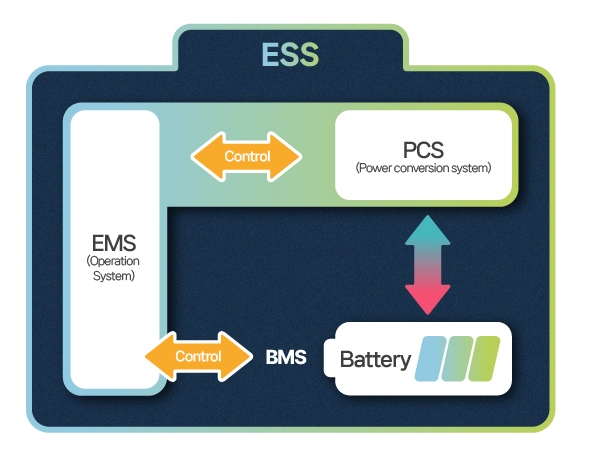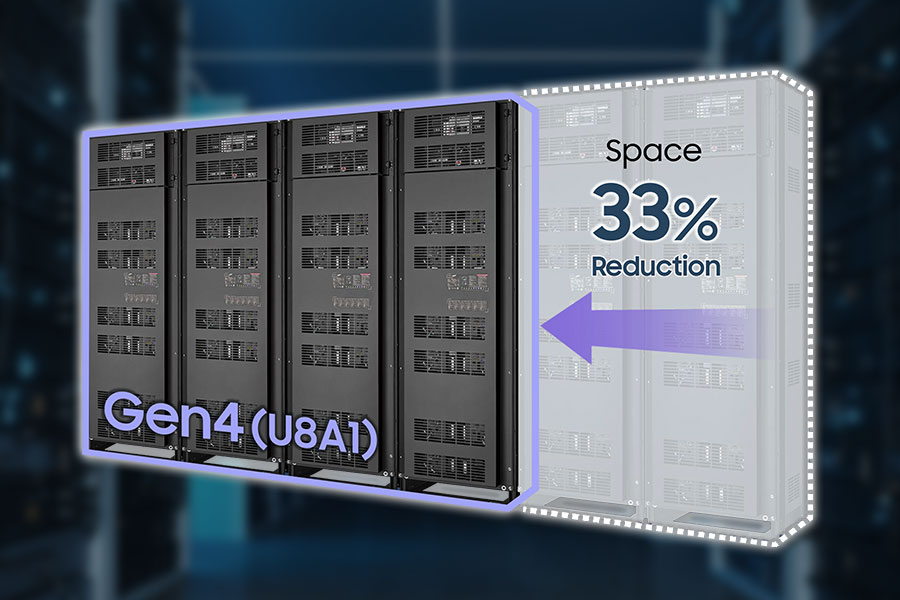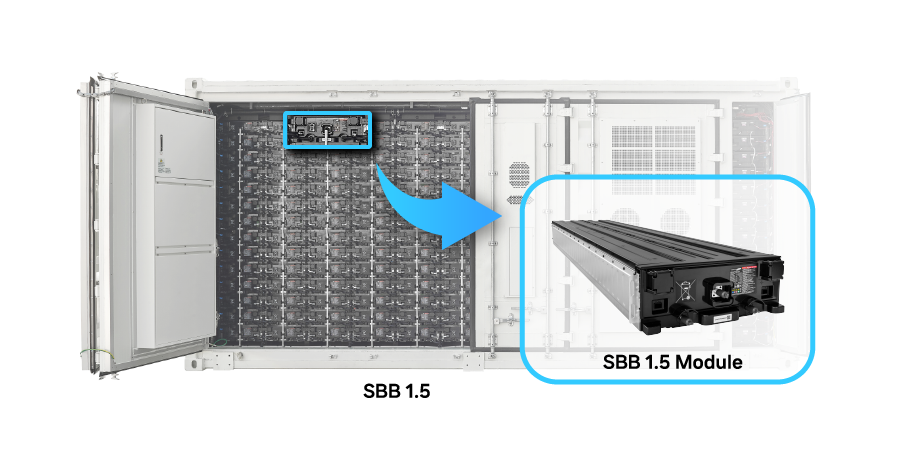Technology & Products
[SDI Focus] ESS Batteries: Powering Everything from Data Centers to Power Plants
2025.06.10
SAMSUNG SDI’s ESS batteries are widely used across the industrial sector—from backup power products like BBU and UPS to power supply systems such as SBB. Underlying this broad application is SAMSUNG SDI’s battery technology, which ensures high output, large capacity, and superior safety.

[ESS is consisted of a battery, PCS and EMS.]
ESS refers to a device that stores electrical energy and provides it when needed. One example is a backup system that supplies power immediately during an outage. As the number of data centers grows with the expansion of AI technologies, the importance of such system is increasing.
Backup systems are largely classified into centralized UPS* and distributed BBU*. UPS is used in large commercial and industrial buildings as well as data centers, where it is installed in a dedicated space and connected to the entire system. BBU, on the other hand, is mainly used in data centers and is installed in a distributed manner within individual server racks. Due to these differences, prismatic batteries are mainly used for UPS, while cylindrical batteries are typically used for BBU to offer better space efficiency.
* UPS : Uninterruptible Power Supply
* BBU : Battery Backup Unit
SAMSUNG SDI’s UPS batteries have drawn industry attention for their ultra-high output, large capacity, and space efficiency. In May, the company’s high-power UPS battery, ‘U8A1’, was recognized for its technological excellence by winning the Awards Winner title at ‘The Smarter E Europe 2025’, the largest energy exhibition in Europ, which made SAMSUNG SDI the only Korean battery manufacturer to receive the honor.
With its high output of 263 kW per rack, the U8A1 provides stable backup power for up to five minutes. It also delivers industry-leading discharge current performance. In addition, by increasing the battery's energy density, the installation footprint has been reduced by approximately 33% compared to previous models, significantly enhancing space efficiency.

[SAMSUNG SDI’s UPS ‘U8A1’ features increased energy density, reducing the installation footprint by approximately 33% compared to previous models.]
For BBU batteries used in data centers, high output performance is critical. To meet this need, SAMSUNG SDI utilizes cylindrical batteries with tabless technology, which reduces internal resistance within the cell.
The tabless design allows the electrode itself to serve as the pathway for electron flow, cutting internal resistance by more than half. This low-resistance feature not only supports high output but also enables fast charging, making it ideal for BBU applications that require rapid discharge and recharge.
Another key application of ESS is in power and commercial use. It helps improve the quality of electricity generated by power plants and stabilizes the output of renewable energy sources, which can be inconsistent. Additionally, it allows energy to be stored during off-peak hours when electricity rates are low and used during peak hours when rates are high, helping reduce energy costs.

[The SBB 1.5 is designed as a single-container system, with its interior structured to allow modules to be installed directly without the need for racks.]
For power and commercial ESS applications, storing large amounts of electricity requires batteries with high output and large capacity. Safety is also important.
SAMSUNG SDI developed the SBB (Samsung Battery Box) to make ESS installation and usage easier for customers.
SBB is a standardized 20-foot container-based solution that integrates batteries, safety systems, and thermal management. Once connected to the power grid, it can be used immediately as an ESS.
In particular, the SBB 1.5 offers significant improvements in capacity, safety, and operational convenience compared to the previous SBB 1.0. Through optimized internal space design, it accommodates more batteries, increasing capacity by 37% within the same footprint. Safety has also been enhanced with the application of EDI (Enhanced Direct Injection) technology, which directly injects fire-suppressant agents into battery modules to effectively prevent thermal propagation.
SAMSUNG SDI plans to continue developing innovative technologies to respond to the growing ESS market and actively expand its presence in the global market.
